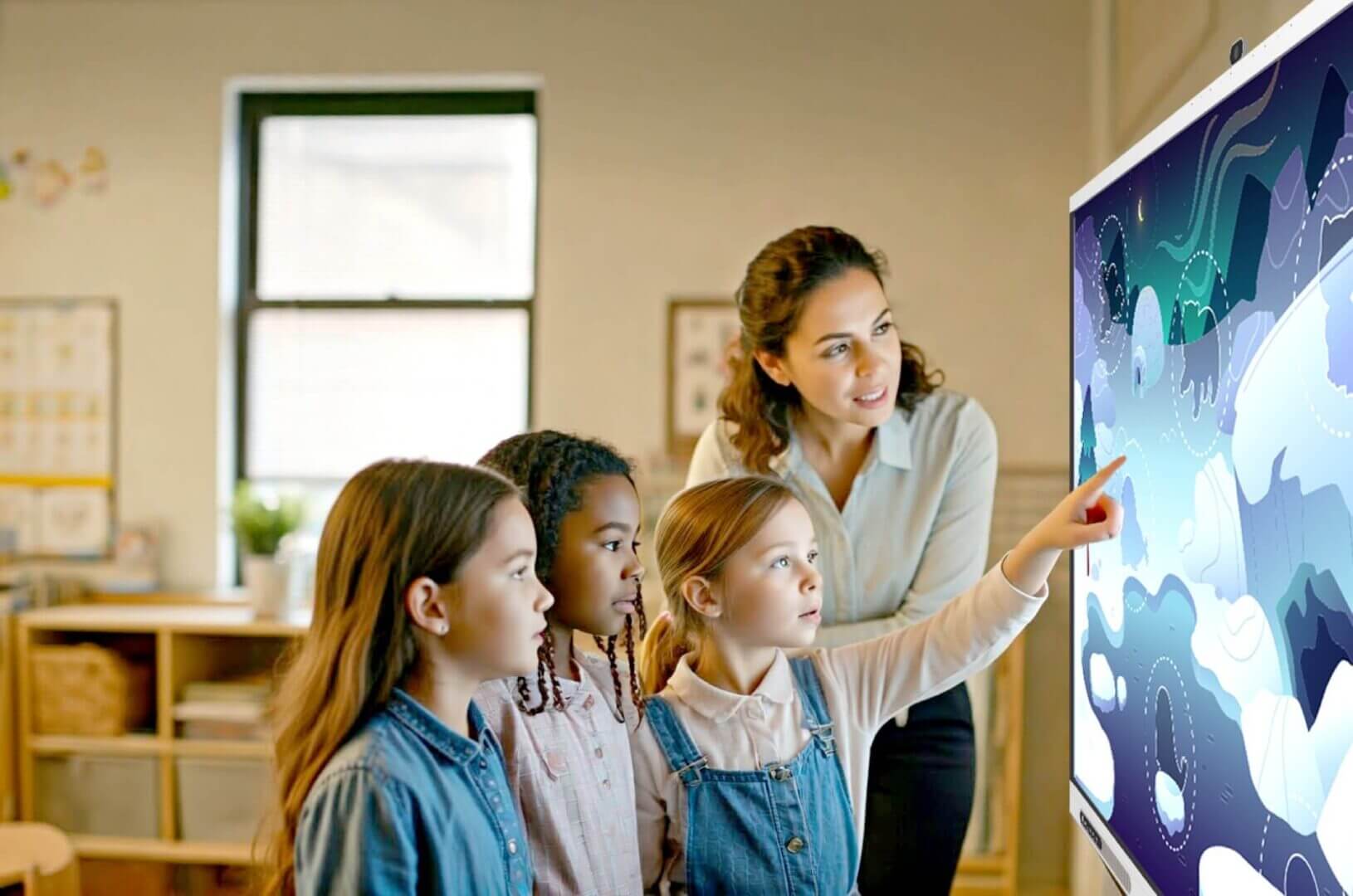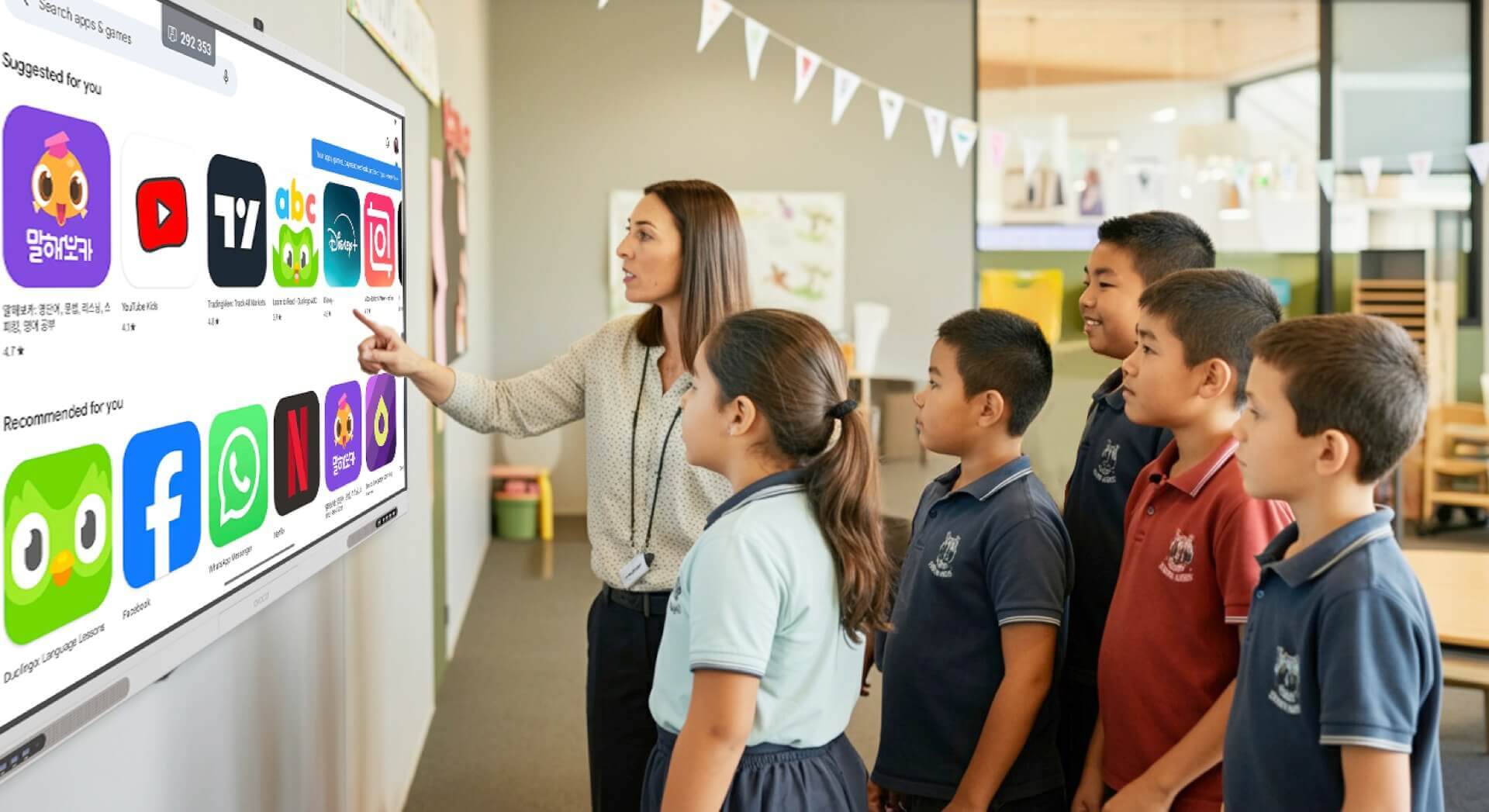
Interactive learning focuses on active student engagement and collaboration using a combination of hands-on experiences and responsive teaching methods.
With interactive learning, traditional lessons are transformed into more engaging experiences that promote deeper understanding and make the experience of learning more enjoyable.
Technology has a large role to play in interactive learning. Educational technology is advancing rapidly, and there are now many opportunities to enrich the learning experience in the interactive classroom.
In this guide, we’ll take a closer look at interactive learning in education, why it matters, and how to implement it, from using online assessment tools to incorporating interactive screens and virtual classrooms.
Teaching and learning in the interactive classroom involves adopting different teaching methods and cutting-edge tech solutions to provide several benefits:
With all these benefits, it’s a great idea to adopt interactive learning in the classroom. Here are nine effective ways to implement it.
Start by introducing technology to the classroom, like interactive screens and smart boards. These provide a simple but highly effective way to transform traditional classes and make them more collaborative by incorporating multimedia experiences.
For example, you can use screens to display interactive videos or smart whiteboards to work on together and encourage students to interact with the content.

You could even introduce touch screens to encourage more hands-on participation, and doing so as part of a lesson can help students to become active learners.
Use software like Google Classroom or other interactive learning sites for education to encourage students to share resources, brainstorm ideas, and provide feedback. You might allow them to bring in their own devices to do this.
These tools encourage greater interaction, making them ideal for group work and helping to take projects beyond the classroom. They can also help students to develop their communication skills as well as improve digital literacy.
Gathering feedback is crucial for any teacher, and you can do this with online tools like quizzes, polls, and assessment tools to get immediate insights.
You can use these to find out how much they have understood about the topic being discussed so you can tailor your lessons accordingly.
The instant results allow you and your students to recognize their strengths and weaknesses or to address misconceptions before moving on.
By turning lessons into games, you can increase motivation and participation for your students.
There are many ways to do this. Simply holding quizzes that introduce an element of competition can be a fun and effective activity that involves working as a team and boosts collaboration.
Or you could even incorporate apps and websites like Minecraft to present challenges, track progress, and reward achievements.
This creates a competitive and fun atmosphere, and it can even help to increase the retention of new concepts.
Get students to generate their own digital content as part of an activity. This could involve video tutorials, podcasts, slideshows, or any other type of content.
By letting them be the creators, you will help to encourage critical thinking while improving their planning and presentation skills.
Students get a sense of ownership this way and can take pride in their work while amplifying their engagement and motivation levels.
Virtual lessons can be a great way to connect with other people outside of the classroom. For example, you could perhaps set up a virtual classroom where students can speak with students from another country.
Or you might arrange for a specialist to provide a virtual presentation on their area of expertise, and then hold a Q&A session with the students.
You can make things even more interesting by incorporating virtual reality into your lessons. This creates a whole new level of immersion and provides a fun way to explore new concepts and enhance the learning experience.
It stimulates multiple senses and deepens understanding, making it a good way to make complex topics fun.
Some students participate more effectively in different ways. For example, they may want to contribute their ideas anonymously rather than in front of the class.
You could incorporate tools like online polls to help students share their views and ask questions in the way that suits them best.
An interactive classroom should be an inclusive environment where students can engage without fear of judgment, so giving students different ways to participate can help them feel heard and valued.
Introducing technology is a great way to enhance the interactive learning experience, but face-to-face interaction matters too.
Combine digital activities with discussions, group debates, and hands-on projects, all of which are ways of enjoying interactive learning.
This gives you an effective way to accommodate different learning styles, reducing overreliance on screens and helping students to build social skills.
By adopting an interactive learning environment, you can modernize your teaching style while providing your students with many benefits.
Experiment with interactive learning by incorporating the ideas in this guide, from introducing interactive screens to using gamification. By doing so, you can help students get a deeper understanding of the topics while having fun and cultivating a love for learning.
Why not check out Avocor’s range of educational displays to find the right solution for your classroom?
Keep up to date with all the latest from Avocor and partners and get information on upcoming events and exciting product news.
Speak to one of our product specialists and find the perfect solution for you.